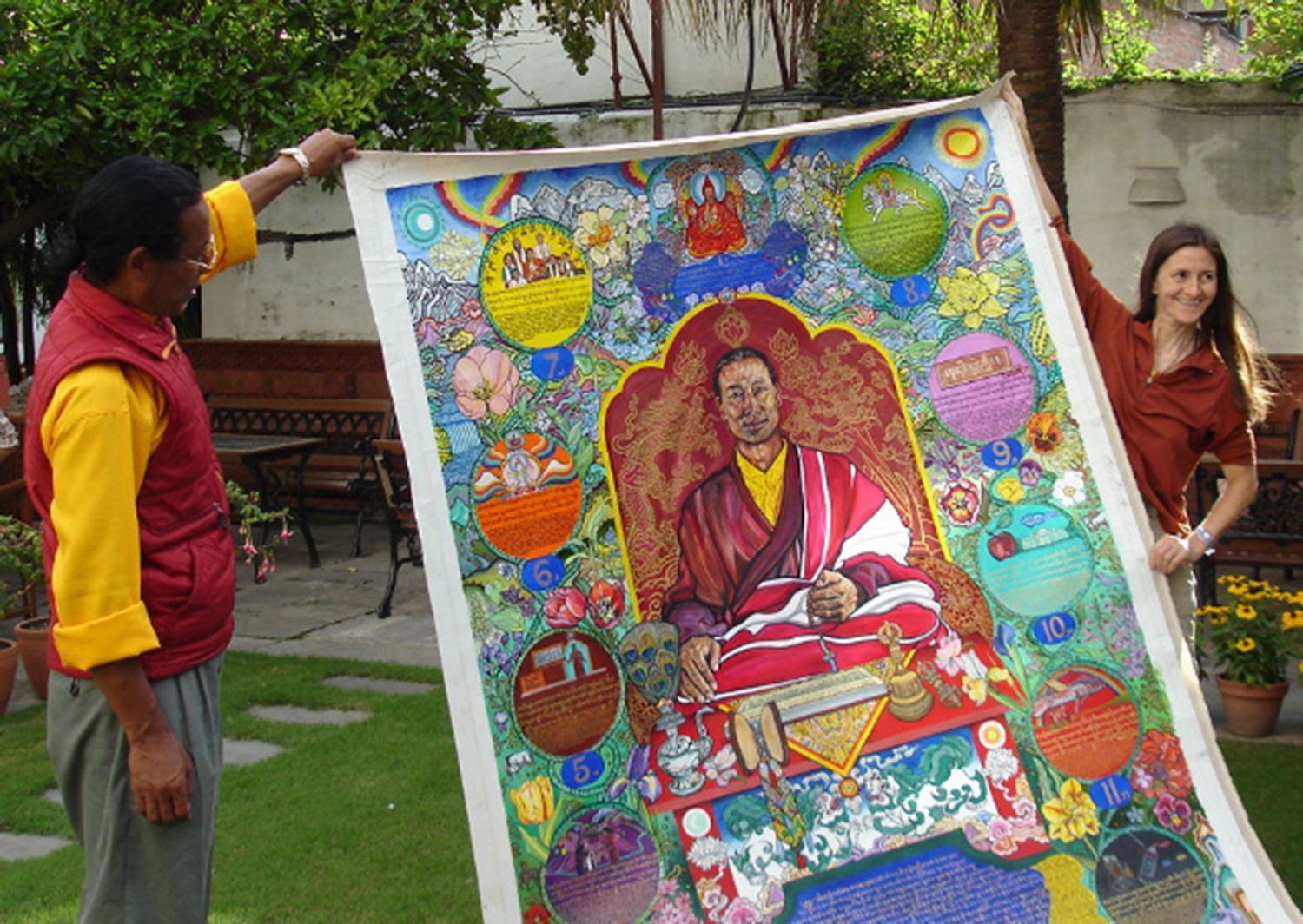Art bridges a culture: From Blacksburg to the diaspora of Tibet

Jane Vance says she likes to quote Georgia O’Keeffe. “Fill a space in a beautiful way,” she always says. And she does. Vance is bewitched by detail, and that makes her art, well, bewitching.
Vance is an adjunct professor of The Creative Process at Virginia Tech, among many other activities. She also spends her days working with special-needs middle schoolers. So why did a small Nepali village throw this Blacksburg local such an extravagant, two-day celebration?
Her art. For more than 20 years, South Asian cultures enchanted Vance. After developing a close relationship with Tsampa Ngawang Lama, a Buddhist monk, and housing him as a guest professor for her class, the lama agreed to have Vance paint his lineage portrait. This portrait has major significance for Tibetan Buddhists.
Vance is the first female westerner to produce art of this religious worth.
“The painting is a lineage portrait, which means it places an individual in his historical context. It explains how he is an encyclopedic representative of his culture’s traditions,” Vance explained.
It took Vance 10 months to complete the portrait. She scrupulously painted Tsampa Ngawang’s story of his visit to Virginia Tech and his importance in his own culture in both Tibetan and English. The entire canvas, 7 feet 6 inches tall by 6 feet 6 inches wide, is completely covered in vibrant oil paint and is 13 feet 6 inches by 9 feet 6 inches with its silk brocade frame. Tsampa Ngawang Lama sits cross-legged in the middle, surrounded by prayers, gods, swirls of color, and flowers of both Tibet and Southwest Virginia.
“In all the Tibetan paintings before this one, the flowers were either lotuses or chrysanthemums. But for the first time this hybrid painting shows flowers from our Appalachian woods, from wild bird-on-the-wing to wisteria to apple blossoms and many garden flowers as well. This was the story of a man making a bridge between his Asian, Himalayan village and our Appalachian village, so I bridged with flowers as well as with the story,” Vance said.
In June 2007, Vance and her team traveled 13,000 miles, riding rickety planes and trekking more than 100 miles through the Himalayas with the large, fragile portrait. The festival was in western Nepal, in a remote region called Mustang.
“To travel to Tsampa’s village requires 13,000 miles and three flights before the long walk. You travel from jungle to moonscape in the remote western Nepal,” Vance said.
“A Gift for the Village,” a documentary about Vance’s journey to Nepal to deliver the artwork, hopes to bring awareness to the United States about the difficult situation Tibetans have been in since the 1950s. The film was recently screened at the Virginia Film Festival.
For thousands of years, Tibet was peopled with peace-loving Buddhists. High in the Himalayas, this country was untouched by other cultures for a very long time. In 1950, after the Communist revolution, China invaded Tibet. Worshipping peace, war was not a language the Tibetans understood, and they crumpled under the unrelenting People’s Liberation Army. Since then, Tibetans have been persecuted and tortured. The Dalai Lama, the religious and political leader of Tibet, hasn’t been able to return safely to his own land since 1959.
According to the Tibetan government-in-exile, more than a million Tibetans have died because of the Chinese invasion. Tens of thousands of others live outside the borders of their homeland.
According to Vance, Tibet’s fate lies in our hands. “Tibetans have been called the most successful exiles in the world. They maintain their traditions of wisdom and compassion. His Holiness [the Dalai Lama] often reminds us that the hope for Tibet is really the responsibility of the free peoples of this world. The first step westerners can take is to learn the history of Tibet.”







